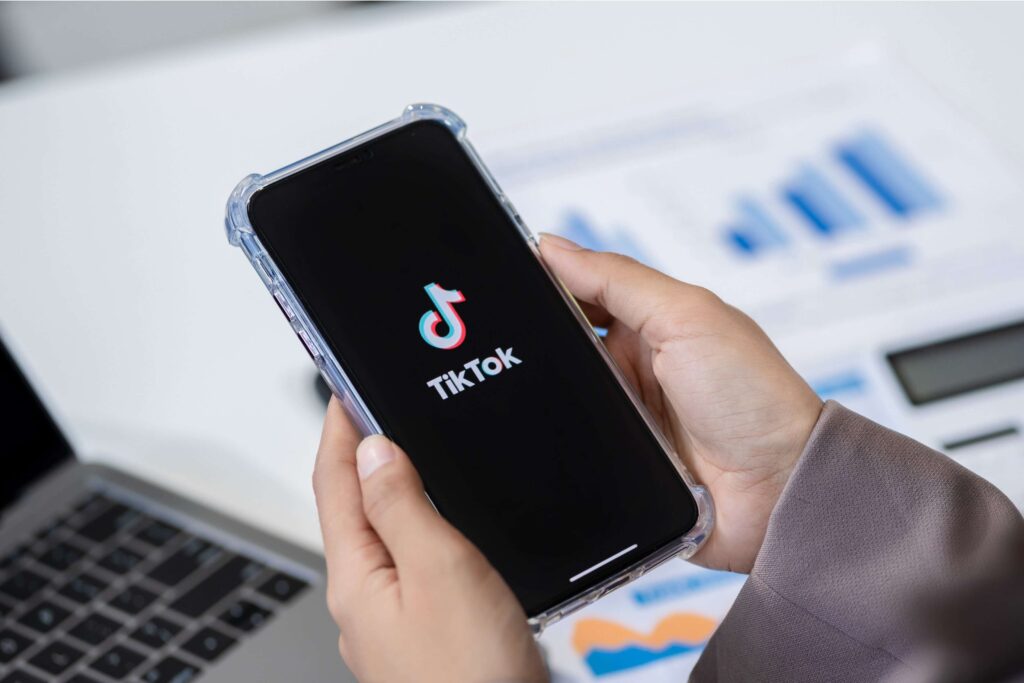Sell custom products with Printify
To navigate the world of fundraising and amplify your efforts, follow our guide, where we’ll explore how to start a fundraising campaign and utilize fundraising tools from the best crowdfunding sites.
Prepare your nonprofit campaign by learning the benefits of crowdfunding, how to launch a successful campaign, the challenges you may encounter, and insights on what to look out for.
The basics of crowdfunding
Crowdfunding is a method of raising funds from a large number of people, typically via the Internet. There are various financial crowdfunding models you can choose from, including:
- Reward-based: Backers contribute to a cause in exchange for a reward, like matching gift programs, which is especially useful when developing a product or service.
- Donation-based: Most commonly used by nonprofits, where the value is based on providing community benefit or even donation matching instead of financial return.
- Equity-based: By contributing to the campaign, investors receive shares with future growth potential, commonly used by startups to offer a stake in their company.
- Debt-based: Known as peer-to-peer lending, this option asks for a loan from a crowd of investors, which the business agrees to pay back with interest over a specific time.
Fundraising campaigns share a large market. With Kickstarter leading the crowdfunding platform market, boasting over 593 thousand projects in the first half of 2023, the global crowdfunding market was valued at $1.41 billion. Revenue is forecast to more than double in size by 2030.
Online crowdfunding sites and social media have made raising funds for nonprofits online much easier. Combined with dedicated marketing efforts, reaching millions of people can take as little as a heartfelt message, proven dedication, and a cause people can rally behind.
Crowdfunding for nonprofits: Benefits

Unlike a for-profit business, a nonprofit has two unique advantages – advocating for a cause and fostering community action. If you aim to engage with a wide audience for fundraising, crowdfunding is one of the best ways to empower individuals to support causes close to their hearts.
Here are some of the benefits of crowdfunding for nonprofits:
- Diverse Funding Sources. Crowdfunding allows nonprofits to tap into a wide range of donors through multiple crowdfunding sites, expanding beyond the scope of traditional fundraising efforts.
- Enhanced Visibility and Exposure. Launching a crowdfunding campaign significantly boosts a nonprofit’s visibility by showcasing its mission to a broader audience.
- Impact Measurement and Insights. Crowdfunding platforms offer tools and metrics to quantify the success and reach of your project, providing direct campaign insights.
- Real-Time Feedback and Interaction. Nonprofits may receive immediate responses and interactions from supporters during a crowdfunding campaign for valuable feedback.
- Flexible Campaign Control. Nonprofits have the flexibility to set their fundraising goals, timelines, and campaign messaging, offering full control over the fundraising process.
- Amplified Awareness and Engagement. Crowdfunding campaigns effectively raise awareness about a cause and engage new and existing supporters through social sharing and media attention.
- Community Building and Support. Crowdfunding fosters a sense of community among donors and supporters who get to rally around a shared goal or mission.
- Cost-Effective Fundraising Method. With low upfront costs and the ability to reach virality with a much larger audience, crowdfunding can be cost-effective.
Make it happen today!
Create custom crowdfunding merchandise for your nonprofit project with Printify
How to launch a crowdfunding campaign in 9 steps
Let’s take a look at the steps you’ll need to take to launch and maintain a crowdfunding campaign for your nonprofit.
1. Pick a crowdfunding platform
Research different crowdfunding platforms to find one that aligns with your nonprofit’s goals and target audience. Consider factors such as fees, features, and success rates before deciding. Keep in mind that crowdfunding platforms may take a cut of the funds as platform fees.
Note
Continue reading for an expanded list of the best organizational and peer-to-peer fundraising platform options for your nonprofit crowdfunding efforts.
2. Set Long-term project goals
Clearly define your fundraising goals, including the amount of money you aim to raise and the timeframe for your campaign. Setting specific, measurable goals will help keep your campaign focused and motivated. Consider preparing tiered goals, deadlines, event dates, and more.
3. Create a great sales pitch
Craft a compelling pitch communicating your nonprofit’s mission, impact, and why potential donors should support your cause. Be transparent and encouraging.
Use compelling storytelling and engaging visuals, and back it up with hard and honest data to inspire your audience. This is also a great place to craft a trailer video as your cover media.
4. Build community engagement
Cultivate a strong community of supporters before your campaign launch – engage with your existing network and reach out to activists across your media by using diverse fundraising ideas to cultivate a community for your cause and expand your overall momentum.
5. Create a marketing plan
Develop a comprehensive marketing plan outlining how you’ll promote your crowdfunding campaign and when. Also, pick your channels, including social media, email marketing, platforms, your website, and those of partner influencers or other organizations.
Create a visual timeline to track your progress and share it with advocates to streamline the process without losing sight of the goal. It doesn’t have to be pin-perfect, but knowing when to create and promote content will give you more time to focus on your crowdfunding effort.
6. Launch your campaign
Launch your crowdfunding campaign on your chosen platform. This isn’t difficult, but it can be nerve-racking. Before anything, consult the platform’s terms of service and crowdfunding page functions to follow the rules and leverage all funding advantages.
Ensure your campaign page is visually appealing, easy to navigate, and includes compelling content that motivates visitors to donate. Don’t forget to test the technical aspects – see if the fundraising page can collect donations and share social media posts without issues.
7. Don’t forget to promote
Promote your campaign throughout its duration, from initial donation to the end of your fundraising goals. Keep your supporters updated on your progress and encourage them to share your campaign within their networks. Choose social media promotion for quick updates and direct engagement, and use email marketing to promote campaign stories and milestones.
8. Analyze your progress
After your campaign ends, analyze its performance to identify what worked well and areas for improvement. Review metrics such as funds raised, donor engagement, and conversion rates for a full cost analysis. See the average donation rates from small and major donors and analyze the funds lost from payment processing fees and the crowdfunding site platform fee.
9. Learn and improve
Use your analysis insights to refine your next crowdfunding campaign and improve future strategies. Continuously evolve and experiment to optimize your approach and impact.
Finally, don’t forget to save donor and volunteer data to maintain your community for other crowdfunding efforts, ensuring your next campaign can raise funds efficiently.
Possible crowdfunding challenges and how to overcome them

Preparing for challenges in your nonprofit crowdfunding campaign is essential. This section outlines common hurdles many campaigners might face without proper preparation and ways to overcome them, ensuring smoother fundraising efforts.
- Other Nonprofit Organizations. You’ll need to differentiate your cause by emphasizing its unique impact. Often, reaching out to a smaller, more niche base of supporters and cultivating more authentic connections can help.
- Limited Outreach. Limited outreach can slow down campaign visibility and donor engagement. Expand your reach by leveraging social media, email marketing, and partnerships with like-minded groups.
Build a larger community by branching out with content marketing – encourage donors with educational literature, nonprofit merchandise, and a physical or live-streamed fundraising event.
- Trust and Credibility. Communicate a realistic nonprofit mission and back it up with transparent financial practices. Provide regular updates and testimonials from the people you’ve helped to strengthen organizational credibility.
- Donor Fatigue. Donor fatigue can happen if supporters feel overwhelmed by constant fundraising appeals – too much of a good thing can start seeming insincere. Address this by diversifying your fundraising effort, spacing out campaigns, showing small victories, and thanking donors individually.
- Post-Campaign Engagement. Neglecting post-campaign engagement can result in donor disengagement and reduced long-term support. Maintain donor relationships by sharing campaign outcomes, expressing gratitude, and involving supporters in ongoing initiatives even after the campaign has ended.
- Technical Challenges. Minimize the possibility of technical issues by regularly testing your donation page, providing user-friendly navigation, and offering multiple payment options. Monitor donor interactions to make the first complaint from a dissatisfied user the last one you’ll ever hear.
Example of crowdfunding platforms for nonprofits
Here are the top crowdfunding platform examples. Find the right crowdfunding platform for your fundraising goal based on its features and associated costs.
Note
See more options for charity crowdfunding pages on our dedicated article featuring the nine best nonprofit fundraising platforms of 2026.
GoFundMe
Highlights: Renowned for its ease of use and broad reach, GoFundMe is a top choice for creating custom donation pages and amplifying your campaign through social media. There’s no platform fee for nonprofits, and it offers automatic tax receipting for donors.
Associated Fees and Costs:
- Platform Fee: 0% for nonprofit campaigns, specifically.
- Transaction Fees: 2.9% + $0.30 payment processing fee per donation.
Indiegogo
Highlights: Indiegogo stands out with flexible funding options – to solicit donations and funds at any level or set up a fixed financial goal. It also includes multiple resources to help launch fundraising campaigns alongside comprehensive campaign tools to monitor performance.
Associated Fees and Costs:
- Platform Fee: 5% on all funds raised (not on the goal you set).
- Transaction Fees: 2.9% + $0.30 per transaction (third-party fees may apply).
Fundly
Highlights: A popular crowdfunding site explicitly made for nonprofit fundraising, Fundly provides customizable donation pages, social media sharing features, and donor management tools. It has an easy setup and no minimum raise requirement.
Associated Fees and Costs:
- Platform Fee: 0% for nonprofit campaigns (relies on platform donations).
- Transaction Fees: 2.9% + $0.30 per transaction.
Kickstarter
Highlights: Ideal for funding innovative nonprofit projects, Kickstarter connects you with a vast community eager to support creative and impactful initiatives. With a track record of successful fundraising, the platform provides proven resources to guide you through effective narrative building.
Associated Fees and Costs:
- Platform Fee: 5% of the total funds raised for successful campaigns only.
- Transaction Fees: 3% + $0.30 per pledge (5% + $0.05 for pledges under $10).
Legal aspects and best practices for crowdfunding for nonprofits

Familiarize yourself with the legal aspects of running a nonprofit campaign:
- Regulations and compliance. Ensure your nonprofit adheres to local and international crowdfunding regulations, including financial reporting and fundraising licenses.
- Tax implications. Understand how crowdfunding contributors are taxed to ensure proper reporting and compliance with IRS guidelines for nonprofit fundraising.
- Intellectual property and copyright. Protect your campaign content by understanding copyright laws, and ensure all materials used are owned or properly licensed by your nonprofit.
- Data protection. Safeguard donor information by complying with data protection laws, such as GDPR in Europe, through secure data handling and privacy policies.
Adopt the best practices to support your online fundraising strategy:
- Clear goals. Set and communicate specific, measurable goals for your nonprofit crowdfunding campaigns to align expectations and foster donor trust.
- Promotion and engagement. Use social media, email newsletters, and community outreach to promote your campaign and actively engage with potential donors.
- Updates and acknowledgments. Regularly update supporters on campaign progress and acknowledge contributions to build trust and maintain engagement.
- Post-campaign communication. Continue communication with supporters after the campaign, sharing outcomes and how funds will be used to encourage long-term relationships.
FAQ
Yes, nonprofits can use crowdfunding to raise funds and awareness for their fundraising needs, leveraging online platforms to connect with a global audience.
Crowdfunding offers nonprofits a way to diversify revenue sources via online fundraising pages, increase visibility, engage with a vast community, and receive immediate feedback.
The four types of crowdfunding are donation-based, rewards-based, equity-based, and debt-based, each offering different benefits and mechanisms for raising funds.
Conclusion
We’ve detailed everything from the basics of crowdfunding to planning and executing an online campaign. Collecting online donations and crowdfunding for charity, creative projects, or even personal fundraising is and will always be a natural and effective way of raising money online.
You can encourage donations from multiple platforms and marketing channels. Choose what’s best for your nonprofit organization, and understand there is no one-size-fits-all crowdfunding platform for every project.
Explore different sites, social media platforms, and fundraising methods to find what works best.
Make it happen today!
Join Printify and personalize your crowdfunding campaign.












